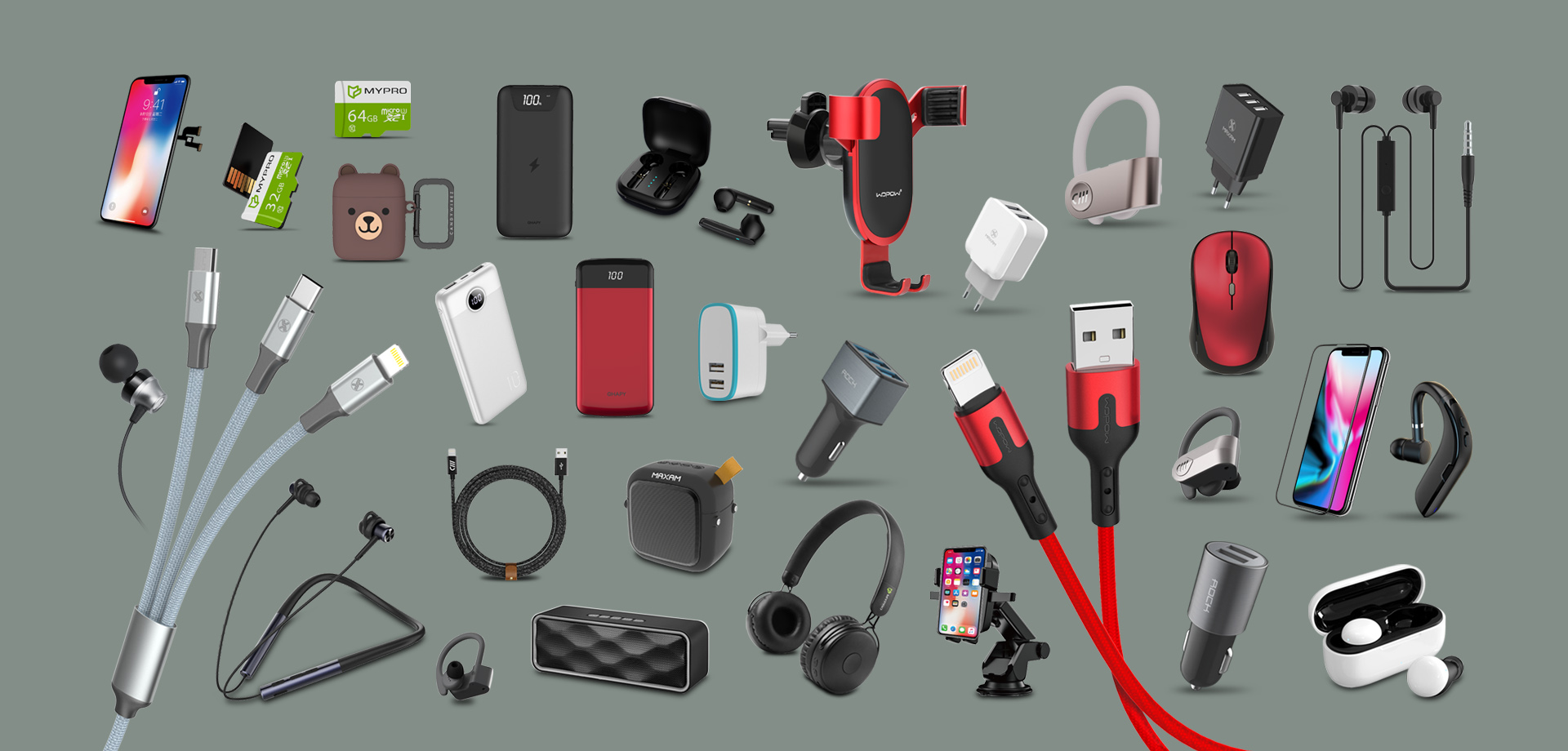The growing global emphasis on sustainability has pushed the electronics industry to reevaluate its manufacturing practices. Eco-friendly electronics are now a priority for buyers and consumers alike, offering benefits such as reduced environmental impact, compliance with international regulations, and improved brand reputation. China, as the largest producer of electronics worldwide, has begun adopting greener production methods to meet this demand. For international buyers, sourcing eco-friendly electronics from China presents a unique opportunity to align with sustainability goals while maintaining competitive pricing.
What Are Eco-Friendly Electronics?
Eco-friendly electronics are designed and manufactured with sustainability in mind, focusing on reducing environmental harm throughout the product lifecycle. Key characteristics include:
Recycled and Sustainable Materials:
Using recycled plastics, metals, or biodegradable materials in product components. For example, some manufacturers use recycled aluminum for casings or bio-based plastics for circuit boards.
Energy Efficiency:
Devices optimized for minimal energy consumption, both during manufacturing and operation. This includes electronics with energy-saving features or components that comply with strict energy efficiency standards.
Minimized E-Waste:
Products designed for easy disassembly, repair, and recycling to reduce electronic waste (e-waste). Modular designs allow consumers to replace individual components rather than discarding the entire device.
RoHS and WEEE Compliance:
Compliance with international regulations such as the Restriction of Hazardous Substances (RoHS) Directive and the Waste Electrical and Electronic Equipment (WEEE) Directive ensures products are free of toxic materials like lead, mercury, and cadmium.
Why Source Eco-Friendly Electronics from China?
China’s electronics industry has made significant strides in adopting sustainable manufacturing practices. Buyers sourcing from Chinese suppliers can benefit from:
- Green Manufacturing Practices
Many factories in China now use eco-friendly production processes, such as:
Recycling waste materials generated during production.
Implementing energy-efficient technologies to reduce power consumption.
Using water-based or lead-free soldering processes.
For instance, manufacturers in Shenzhen’s electronics hub have adopted solar-powered production lines to lower their carbon footprint.
- Cost-Effective Sustainability
While eco-friendly materials and processes may increase production costs in some regions, China’s scale of production and access to resources help offset these expenses. Buyers can source sustainable products at competitive prices without compromising quality.
- Compliance with Global Standards
Chinese suppliers are increasingly producing electronics that meet international sustainability certifications, such as RoHS, ISO 14001 (Environmental Management Systems), and Energy Star. These certifications make it easier for buyers to comply with import regulations in their home countries.
- Availability of Customization
Chinese factories offer customization options to help buyers create eco-friendly products tailored to specific markets. This includes selecting sustainable materials, designing energy-efficient circuitry, and using recyclable packaging.
Steps to Source Eco-Friendly Electronics from China
- Identify Certified Manufacturers
Start by researching manufacturers that specialize in eco-friendly electronics. Look for certifications such as:
ISO 14001: Demonstrates the supplier’s commitment to environmental management.
RoHS Compliance: Ensures that the product is free from hazardous substances.
Energy Star: Certifies energy-efficient products.
Platforms like Alibaba and Global Sources often list these certifications, but you can also request proof directly from suppliers. Partnering with a local procurement office can help verify the authenticity of certifications.
- Specify Sustainability Requirements
Clearly communicate your eco-friendly requirements to suppliers during the initial stages of procurement. Key specifications might include:
Use of recycled or biodegradable materials.
Compliance with energy efficiency standards (e.g., standby power consumption below a specified threshold).
Minimal packaging or the use of recyclable packaging materials.
Lifecycle considerations, such as repairability or recyclability.
Providing a detailed request for proposal (RFP) ensures that suppliers understand your expectations from the outset.
- Audit the Supply Chain
Eco-friendly products depend not only on the manufacturing process but also on the materials and components sourced by suppliers. Conduct supply chain audits to ensure that raw materials are responsibly sourced. For example:
Confirm that metals are obtained from conflict-free and sustainable sources.
Ensure suppliers work with recycling facilities to procure post-consumer materials.
Evaluate energy use throughout the supply chain, from material extraction to delivery.
Buyers can work with third-party auditing agencies or procurement offices in China to conduct these assessments.
- Request Product Samples
Before committing to large orders, request product samples to evaluate their environmental attributes. Test the samples for:
Material composition: Verify the use of recycled or non-toxic materials.
Energy performance: Test power consumption levels during operation and standby modes.
Durability and repairability: Assess whether the product can withstand prolonged use and be easily repaired or upgraded.
Samples also provide an opportunity to check compliance with regulations like RoHS and WEEE.
- Negotiate Contracts with Sustainability Clauses
Incorporate sustainability clauses into your contracts to hold suppliers accountable. These clauses may include:
Penalties for non-compliance with agreed-upon environmental standards.
Requirements for periodic audits to verify ongoing adherence to sustainability practices.
Provisions for end-of-life recycling or take-back programs.
- Monitor Production and Packaging
Eco-friendly manufacturing doesn’t end with the product itself; packaging also plays a significant role in sustainability. Work with suppliers to minimize packaging waste by:
Using recyclable or biodegradable materials.
Avoiding excessive plastic wraps or Styrofoam.
Designing compact packaging to reduce shipping volume and emissions.
Eco-Friendly Innovations in China’s Electronics Sector
China’s manufacturers are increasingly embracing innovative technologies to enhance sustainability:
- Recycled Materials in Consumer Electronics
Several Chinese companies now use recycled metals and plastics in their products. For instance, some smartphone manufacturers incorporate aluminum recycled from old devices into their casings, reducing the need for mining.
- Energy-Efficient Manufacturing
Factories are adopting renewable energy sources, such as solar and wind power, to reduce emissions. This is particularly evident in regions like Guangdong, where government incentives encourage clean energy use.
- Modular Electronics
Chinese manufacturers are developing modular designs for devices like laptops and smart home products, allowing users to replace or upgrade components instead of discarding entire devices. This extends product lifespans and reduces e-waste.
- Biodegradable Circuit Boards
Research and development efforts are underway to create circuit boards made from biodegradable materials, such as cellulose-based substrates. While still in the early stages, these innovations promise to revolutionize electronic waste management.
Challenges and Solutions for Sourcing Eco-Friendly Electronics
- Higher Initial Costs
Eco-friendly materials and processes can be more expensive than traditional alternatives. However, buyers can negotiate bulk discounts or work with suppliers to streamline costs.
- Limited Supplier Transparency
Not all suppliers provide clear documentation of their sustainability practices. Conducting thorough audits and working with trusted procurement offices can mitigate this issue.
- Certification Validity
Some suppliers may falsely claim compliance with environmental standards. Buyers should verify certifications through independent agencies or request audits of manufacturing facilities.
Case Study: Sustainable Sourcing for a European Electronics Brand
A European brand specializing in sustainable consumer electronics partnered with a Chinese manufacturer to develop a new line of solar-powered IoT devices. By specifying eco-friendly materials and collaborating on energy-efficient production processes, the brand achieved:
A 30% reduction in the carbon footprint of its products.
Compliance with EU RoHS and WEEE regulations, simplifying market entry.
Positive consumer feedback, enhancing brand loyalty and market share.
This partnership highlights how international buyers can leverage China’s eco-friendly manufacturing capabilities to achieve both environmental and business goals.






